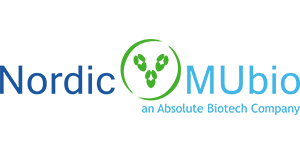Mouse anti CD22
Mouse anti CD22, IgG1, Clone: 3H4
SKU
NORMUB2022P
Packaging Unit
0,1mg
Manufacturer
Nordic-MUbio
Availability:
loading...
Price is loading...
Clone: 3H4
Background: The HLA class I gene family is composed of a group of genes whose products encode cell surface glycoproteins of MW 40–45 kDa, associated non-covalently with the beta-2-microglobulin light chain. They include the three polymorphic molecules HLA-A, -B, and -C, which are ubiquitously expressed and which are able to present intracellular peptides to cytotoxic T cells. Three additional class I genes are known, commonly referred to as non-classical or class Ib genes, all highly homologous to the other class I genes and all of which associate with beta-2-microglobulin light chain. In humans, each of the class Ib genes appears to exhibit a distinct pattern of expression in developingand adult tissues. HLA-E transcripts are distributed widely in adult tissues and have also been found in the placenta and fetal liver. In the adult, the presence of HLA-F has been shown in skin, resting T cells, and B cells, whereas its expression during development has been reported in fetal liver and at low levels in placenta and extra-placental tissues. HLA-G was originally thought to be expressed only in certain populations of placental trophoblasts, but low levels have also been found in a variety of human tissues. Recently it was shown that HLA class I expression in breast cancer cells can have a predictive value for chemotherapy response.
Source: 3H4 is a mouse monoclonal IgG1 antibody derived by fusion of SP2/0-Ag14 mouse myeloma cells with spleen cells from BALB/c mice immunized with Daudi cells, a Burkitt’s lymphoma cell line.
Specificity: The mouse monoclonal antibody 3H4 recognizes HLA class I heavy chains (CD22).
Formulation: Each vial contains 100 µl 1 mg/ml purified monoclonal antibody in PBS containing 0.09% sodium azide.
UniProt: P35329
Background: The HLA class I gene family is composed of a group of genes whose products encode cell surface glycoproteins of MW 40–45 kDa, associated non-covalently with the beta-2-microglobulin light chain. They include the three polymorphic molecules HLA-A, -B, and -C, which are ubiquitously expressed and which are able to present intracellular peptides to cytotoxic T cells. Three additional class I genes are known, commonly referred to as non-classical or class Ib genes, all highly homologous to the other class I genes and all of which associate with beta-2-microglobulin light chain. In humans, each of the class Ib genes appears to exhibit a distinct pattern of expression in developingand adult tissues. HLA-E transcripts are distributed widely in adult tissues and have also been found in the placenta and fetal liver. In the adult, the presence of HLA-F has been shown in skin, resting T cells, and B cells, whereas its expression during development has been reported in fetal liver and at low levels in placenta and extra-placental tissues. HLA-G was originally thought to be expressed only in certain populations of placental trophoblasts, but low levels have also been found in a variety of human tissues. Recently it was shown that HLA class I expression in breast cancer cells can have a predictive value for chemotherapy response.
Source: 3H4 is a mouse monoclonal IgG1 antibody derived by fusion of SP2/0-Ag14 mouse myeloma cells with spleen cells from BALB/c mice immunized with Daudi cells, a Burkitt’s lymphoma cell line.
Specificity: The mouse monoclonal antibody 3H4 recognizes HLA class I heavy chains (CD22).
Formulation: Each vial contains 100 µl 1 mg/ml purified monoclonal antibody in PBS containing 0.09% sodium azide.
UniProt: P35329
| SKU | NORMUB2022P |
|---|---|
| Manufacturer | Nordic-MUbio |
| Manufacturer SKU | MUB2022P |
| Package Unit | 0,1mg |
| Quantity Unit | STK |
| Reactivity | Human |
| Clonality | Monoclonal |
| Application | Immunohistochemistry (frozen), Flow Cytometry, Immunocytochemistry |
| Isotype | IgG1 |
| Host | Mouse |
| Conjugate | Unconjugated |
| Product information (PDF) | Download |
| MSDS (PDF) | Download |

 Deutsch
Deutsch







